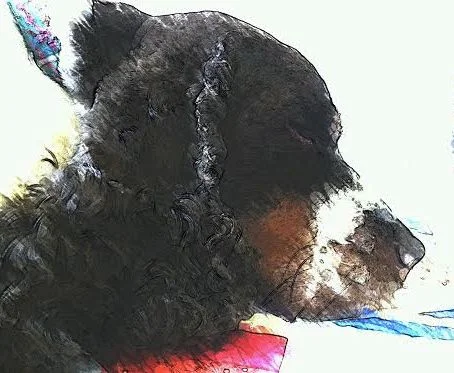 |
| Color Study: Purple to Blue with Compliments. A table runner, 17.5 x 40.5 inches |
This color study was a real challenge. Purple isn't my favorite color and I really struggled even defining my purples. I went to a local store with a large collection of Kona cottons and found what I thought was the perfect spectrum of blue to purples fabrics. Until I got home and laid them out…
What is purple? What is violet blue? What is real blue? The only one I was confident about was red-violet/magenta.
I'm not sure the color in the photo is all that clear either. But here are my red-violet, purple, blue violet selections and blue selections.
For this project I used 2 sets of analogous colors:
Purple, blue-violet and blue
Yellow-green, yellow and yellow-orange
Two of the colors are transitional colors. (They are called transitional because they are made by mixing 2 primary colors).
Purple--a combination of red and blue
Green--a combination of yellow and blue
The yellow is the compliment of purple and yellow-orange the compliment of blue-violet. I picked the green rather than orange for the block because I liked the effect better.
I then added some orange accents because that is the compliment of the blue. I also chose orange thread for quilting.
Still unsure about what real purple is, I raided my stash and found 2 another purples so there are 3 purples in the project. I think in the end, the purple in my border is the best purple of the three.
The first set of pinwheels I made combined blue and purple (middle block on the right above). I didn't like them that much. They seemed harsh to me. I'd jumped a step on the color wheel from purple to blue, bypassing the blue-violet. So then I made several more blocks with blue-violet and blue, which I found more pleasing (top and bottom block on the left). I put both pairings in the table runner for comparison. This is a color study so I thought it would be good to include both pairings!
 |
| Blue with blue-violet (left), Blue with purple (right) |
I think one of my issues with purple (i.e., why I don't like it that much) is because it absorbs so much light. Sewing the purple was like sewing black. I found it hard to see my stitches or where I was going. I much prefer lights and brights!
Here's something else I noticed. Standing up close to my computer monitor the colors in the wall hanging look washed out. When I stepped back, the intensity and color was much truer to life.
I really like the completed table runner. It's vivid!!
Here is the flip side:
This color study was a lot of fun and I learned a lot doing it.
I have an idea for a small project (just one block I think) using color gradations. I'll keep you posted!








































































